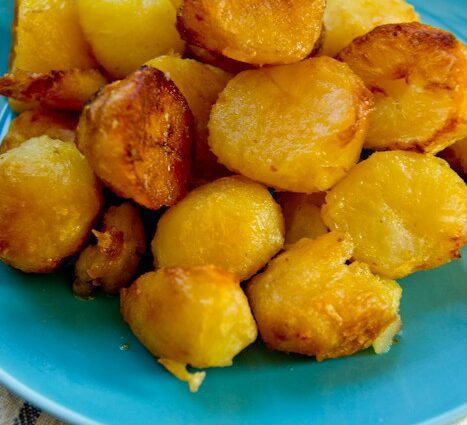Contents
Kiwi potatoes: description
Everyone who planted Kiwi potatoes on their land made sure that it is stored for a long time and brings high yields. This is one of the rare varieties that is not damaged by the Colorado potato beetle. The dense white flesh is more suitable for making purees and pie fillings than for frying.
Description of the potato variety “Kiwi”
This potato variety got its name due to its unusual appearance, which makes it look like the fruit of the same name. The rind of the tubers is orange and rough; upon close examination, it has a reticular structure. The pulp is dense, white, well boiled, does not have a pronounced taste and smell. This variety was bred in the Kaluga region, in the city of Zhukov.
Kiwi potatoes have large tubers with a thin, rough orange peel
The undoubted advantage of “Kiwi” is its resistance to fungal diseases – late blight, rot, cancer. Colorado beetles do not like to eat potato tops, they do not lay eggs on its leaves
The bushes of “Kiwi” are branched, with a large number of leaves, reaching more than half a meter in height. The flowers are purple, the leaves are a bit unusual – dark green in color with barely noticeable hairs. The variety is high-yielding, up to 2 kg of potatoes are harvested from one bush. The tubers grow mostly large, the ripening period is late – about 4 months after planting. The great advantage of the variety is its resistance to deterioration during storage.
How to grow a variety of potatoes “Kiwi”
Potatoes are planted in a temperate climatic zone in late April or early May, when the frost ends. The distance between the tubers should be at least 30 centimeters, since the bushes grow large, the planting depth is about 10 cm. This variety does not propagate by seeds.
To the soil “Kiwi” is not picky, it grows well on loamy, podzolic and soddy soil, which should be well fertilized. It is advisable to choose well-lit and sun-warmed beds for planting potatoes.
A plot for potatoes is dug up in the fall and rotted manure and complex fertilizers are introduced. During cultivation, fertilizing with liquid mineral fertilizers is done in June. The beds are watered in dry weather, loosen the soil and pull out weeds.
They begin to dig out the potatoes in September, when the tops are completely dry. Before being stored, the tubers are dried.
Even a novice gardener can grow Kiwi potatoes. This variety is unpretentious in care, gives a large yield, is not affected by diseases and pests.










